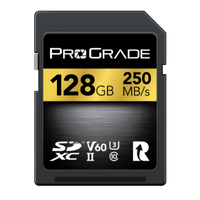There are not many things more gut-wrenching than losing data. Ending up empty-handed after a long day in the field or studio is the biggest nightmare of every photographer and videographer. After all, that’s why we follow such rigorous data loss prevention protocols whenever shooting, transferring, or editing our photos and videos.
However, it still happens. Anyone who’s ever held a camera has experienced data loss for one reason or another. Chances are – since you are reading this article – that you are facing it right now. If so, be assured, not all is lost. If you didn’t lose data because you lost your card or forgot to hit the record while filming, you still have hope. Read on for memory card data recovery steps.
Common causes for data loss.
There are two main reasons why data loss occurs. The most common one being – human error. We accidentally delete something we shouldn’t or format the whole memory card. It happens to the best of us, and it often comes out of the blue. You don’t even have to have the intention to do it. Some cameras format the card whenever you switch from NTFS to PAL. Sure there is this pop-up message, but it is notoriously easy to miss. After all, who pays attention to details when navigating on the safer side of the camera menu.
The second common reason people lose their precious photos or videos is because of corrupt data. There are numerous ways it can happen, but usually, something has interrupted the data-writing process. For example, if the battery dies or gets removed before the camera finishes writing to the card, it may corrupt the entire card and not only the last file. Any missing data can render the memory card unreadable for both the camera and the computer. You may see an error message telling you to format the card.
How does memory card data recovery work?
Whenever data on the card gets corrupted, for whatever reason besides physical damage, the information is usually still there. It may not be accessible to you, but it is still on the card.
The same is true when you delete something or format the card in the camera. Deleting or formatting does not erase the data. It only clears the File Allocation Table (FAT), allowing new data to be written on the card. FAT serves as a roadmap for the flash controller. This roadmap shows which bits of data make up your photos or videos. Without FAT, a flash controller has no clue what to do with all the ones and zeros on the card. Data recovery software is designed to restore File Allocation Tables and fix corrupt data, so flash controllers can again make sense of it.
ProGrade Digital’s advanced Recovery Pro™ software works similarly but is designed specifically for video and photo files. While many other programs attempt to recover every possible file type, and often fall short because of it, then Recovery Pro™ focuses solely on deleted photo recovery and deleted video recovery, making it a go-to tool for professional photographers and cinematographers.
Recovery Pro™ is familiar with all the different codecs and recognizes every possible file type that comes out of a modern camera, whether it’s a Sony, Canon, or Nikon. So, JPEG or RAW, MP4 or AVCHD, or anything in between, Recovery Pro™ can restore them all. Plus, we continuously update the software as new codecs emerge.
Steps for memory card data recovery
Step 1:
If you accidentally deleted some photos or happened to format the entire card, the first thing you should do is stop using the card and remove it from the camera. Any additional photos you take or videos you shoot may overwrite the deleted ones, making them partially or entirely unrecoverable. The same goes if the data on the card becomes corrupt, or both your camera and computer are unable to read the card. Stop using the card and do not format it even if your camera or computer suggests this to make the card readable again.
Step 2:
Download Recovery Pro™ evaluation software. It is completely free, and you can use it to assess the scope of damage and see if your images are recoverable.
Step 3:
Once green-lighted by the free evaluation software, upgrade to the paid version right from the software and use it for deleted photo recovery and deleted video recovery. It’s just $49.99 for a full-year license, and you can use it to recover an unlimited number of images.
If you have questions, run into any issues, or if the evaluation software does not turn up favorable results, feel free to email us at support@progradedigital.com or call us at 877.219.0203. We are always here to help you!





